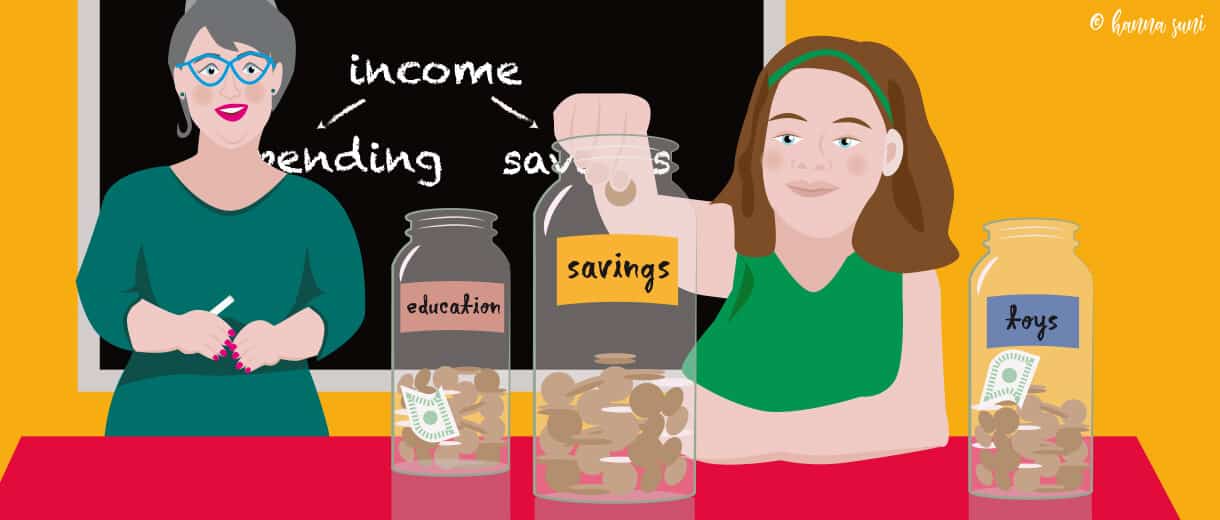Top Creative Money Lessons To Teach Your Kids
On a hot summer day, when my daughter was seven, she and three of her friends set up their first lemonade stand in front of our house. Parents provided the table, cups, lemonade and freezer pops. The kids made the sign for the table and rode their bicycles around the neighbourhood promoting their new venture.
By the end of the day, they sold out and split the profits four ways. It was their first experience with a joint venture and they had such a great time! Afterwards, we sat down with her and talked about saving, spending and giving. Today, she’s a 19-year-old college student and still talks about that time and how it impacted how she feels about money.
The money stories we carry as adults started when we were young. Now, more than ever, financial education is an essential conversation to have with children of any age and it can be fun, too! The important thing is to make it age-appropriate, create activities important to them and incorporate these conversations into everyday family time so they become the norm rather than the exception.
Whether you’re a parent, grandparent or have a close relationship with a child, here are some ideas and age groups we can address.
Pre-School (Age 3-4)
While a preschooler may not yet understand the value of money, they are old enough to understand basic responsibilities such as putting toys away after a day of play and being rewarded for doing so. Here’s a fun activity: using a simple calendar, on the refrigerator, have the child select a sticker of their choice to mark each day they put their toys away. Keep it fairly eye level, so the child can see the progress. At the end of the week, if there are 5 days in a row of stickers, the child receives a small monetary reward they can place in a clear jar.
Primary School (Age 5-8)
This is the age where kids begin to understand the value of goods. Now is a great time to continue the lessons from preschool about doing chores, earning rewards and introducing the concepts of saving, spending and giving. Begin explaining the cost of items and how people earn money. For example, people go to work in exchange to earn money to buy food. You can play store with your child and attach a price to each item.
Using three clear jars, help the child write “Saving”, “Spending”, “Giving” on three separate labels and attach them to the jars. This is a great opportunity to discuss the importance of saving for a toy, spending some now on a small treat, giving to those in need and determining how much for each jar.
Children in this age group understand expectations, so it’s important to discuss these before heading to the store to avoid unplanned impulse buying.
Tween (Age 9-12)
Ah! The tween years. Kids in this age group feel a push-pull between wanting to stay little and wanting to be a teenager. Now is when they begin to understand the difference between wants and needs. They can also comprehend further into the future, so this is a perfect time to set up a student savings account at your local bank.
They also want to belong and are susceptible to peer pressure to purchase the latest and greatest gadgets or clothes. This is when they become aware of big brands and the opportunity to talk with them about how they feel about those companies, their products and why. It is important to reinforce working and earning for these kids. Jobs such as raking leaves, mowing lawns and shovelling snow are a great introduction to earning their own money as well as setting money goals.
These kids understand the idea of percentages. During family dinner, initiate the conversation by asking what and who is important to them and how they want to divide their money among the areas of saving, spending and giving. Have them design a fun goal sheet so they can visually see what they’re working toward.
Now is also a great time to include the kids in family money conversations such as grocery spending or saving for a vacation. It may feel uncomfortable at first as many of us were not included in these conversations when we were children. However, having these open money conversations now sets the foundation for them to feel safe in coming to you, instead of someone or something else, when they are teens.
Teens (Age 13-19)
This is a great time for letting them experience a bit of independence by working in an after-school or weekend job. Depending on where you live will depend on the legal age requirement for teens to be employed. If they are not old enough for a work permit, they can still do small non-official jobs such as babysitting, tutoring, raking leaves or shovelling snow.
Still adhering to the three jar rule of saving, spending and giving, you may want to consider having them establish a student checking account with a debit card in addition to their already established savings account. They can easily set up goals using a spreadsheet. Be aware, though, with online banking, balancing a chequebook with a real paper check register is becoming a lost art. This is still an essential piece of learning how to properly keep track of money that should be included as part of managing a checking account.
As kids in this age group are constantly on their screens, this is also a good time to revisit the advertising conversation and how it relates to social media. When my daughter was 13, we had discussions in the supermarket check out aisle about how the pictures of women on the magazine covers were not representative of most women and created a false image to try to live up to.
Similar conversations can be had around money and how different companies use social media ads to convince you that if you use their product, you’ll be happier or thinner or more successful. This is a wonderful opportunity to dispel these myths and how to keep more money in your child’s savings account.
Embrace the opportunity to have open, judgement-free conversations about whether your teen is going to continue education after high school in a university or trade school. There are some kids that know from early on what they want to do and some that take longer. Either way, it’s important to start the money conversations about how it’s going to be paid for.
The later teen years are appropriate to introduce the concepts of credit, interest and investing. The timing of if, or when, an older teen should use a credit card is different for each family, yet this is a great time to talk about what credit is and how it is built.
Lastly, while it’s ideal to start teaching kids about money when they’re young, that’s not always how life works. If that’s you, it’s OK. Start where you are and go from there. The lessons they will learn going forward will be just as valuable.







